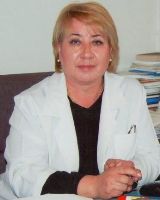COVID-19 IN CHILDREN IN THE CONDITIONS OF THE CHUY VALLEY: CLINICAL, EPIDEMIOLOGICAL AND THERAPEUTIC ASPECTS
DOI:
https://doi.org/10.54890/.v4i4.169Abstract
Abstract. The pandemic of a new coronavirus infection in the world, including in Kyrgyz Republic, was the basis for a detailed analysis of characteristics of the disease in children in the Republican Clinical Infectious Diseases Hospital (RCIDH) in Bishkek. The aim of the study is to analyze the clinical and epidemiological data. The approaches to the treatment of COVID-19 in children were based on materials from a specialized infectious hospital. It was first deployed in Bishkek in April 2020. Мaterials and methods. 93 medical records of sick children were analysed aged 1 to 18 years, who were isolated in the boxes of the RCIDH with a diagnosis of COVID-19. It was confirmed by a positive nucleic acid amplification test, RT-PCR, for SARS-CoV-2.
Results. Children over 3 years of age prevailed among the other cases (67.7%, n=63). House hold and Family contacts prevailed too (65.6%, n=61). In most cases, children suffered from a mild form of the disease - 51.6% (n=48), than a moderate form - 48.4% (n=45). In 8.6% (n=8) of cases, there was a late (in the second week of the disease) hospitalization of patients. Children presented with fever in 61.3% (n=57) of cases. Half of those children - 47.2% (n=27) had febrile temperature. It was found that the clinical picture was dominated by throat hyperemia (51.6%, n=48), cough - 50.5% (n=47), difficulty in
nasal breathing - 23.7% (n=22), headache - 18.5% (n=17), muscle pain - 12% (n=11), agitation - 10.9% (n=10), symptoms of intestinal dysfunction - 8.7% (n=8), taste disturbance - 6.5% (n=6), anosmia - 3.2 % (n=1), chest pain - 3.3% (n=3), and exanthema - 1.1% (n=1). Patients were treated in accordance with the guidelines for the treatment of COVID-19 in adults and children.
Conclusions. Symptoms of COVID-19 in children in the Chui Valley are nonspecific, but have unique features compared too ther acute respiratory viral infections. However, the principles of therapy are similar. They in volve taking in to account the severity of the disease and concomitant pathology. There is a definite tendency to wards more frequent lung damage in patients of early and preschool age.
Keywords:
SARS-CoV-2, COVID-19, new coronavirus infection, pneumonia, children.References
1. COVID-19 coronavirus pandemic: https: // www.worldometers. info/coronavirus/
2. Toigombaeva V.S., Nurmatov Z.Sh. The epidemiological situation of COVID-19 in the Kyrgyz Republic. Heart, Vessels and Transplantation. 2020. doi: 10.24969/hvt. 2020. 194.
3. Тайчиев И.Т., Эгамбердиева Г.С., Джолдошева Г. Т., Акжолтоева А. А., Тоялиев М.А., Сатыбалдиева А. Коронавирусная инфекция (КОВИД-19) в Кыргызской Республике и ее эпидемиологические особенности. Вестник Ошского государственного университета. 2020,2-5:125-133.
4. Молдокматова А.О., Дооронбекова А.Ж., Жумалиева Ч.К., Мукамбетов А.С., Кубатова А.К., Эстебесова А.М., Ибрагимов Ш.М., Кутманова А.З., Джангазиев Б.И., Усенбаев Н.Т., Жороев А.А., Абдыкеримов С.Т., Уайт Л.Д., Касымов О.Т. Моделирование потенциального воздействия различных сценариев прекращения карантинных ограничений на эпидемиологическую ситуацию с COVID-19 в Кыргызской Республике. Здравоохранение Кыргызстана. 2020;4:3-13.
5. Успеева А.Э., Махмудова Ж.А., Таалайбекова М.Т., Баатырова Н.Ж. Биохимическое обоснование влияния COVID-19 на состояние гиалуроновой кислоты в альвеолах легких. Здравоохранение Кыргызстана. 2021;2:152-159.
6. Мамытова Э.М. Патофизиологические и клинические аспекты поражения нервной системы при COVID 19. Здравоохранение Кыргызстана. 2021;3:8-15.
7. Субанбекова А.Б., Шабданбаева Н.Х. Состояние обонятельного анализатора у пациентов с COVID-19. Наука, новые технологии и инновации Кыргызстана. 2020;12:43-45.
8. Kadyrova A., Antipina I., Kyrbasheva I., Kulbaeva B., Baudinov I., Ibraimov K., Zhunushaliev Ch., Abdullaeva A. Differential radiological semiotics of coronavirus infection and other etiology pneumonias. Heart Vessels Transplant 2021;5. doi: 10.24969/hvt.2020.251.
9. Ashimov J., Kudaiberdiev T., Abibillaev D., Gaybyldaev J., Zaripov D., Akhmedova I. The effects of tocilizumab on clinical and laboratory features of patients with severe COVID-19: a single center experience. Heart, Vessels and Transplantation 2020;4. doi: 10.24969/hvt.2020. 220.
10. Белов Г.В., Махмадиев А.К., Батырбекова Л.К., Нарбеков М.О. Главная задача на завтра - реабилитация пациентов перенесших COVID-19. Медицина Кыргызстана. 2020;3:8-14.
11. Эсеналиева Ж.А., Бримкулов Н.Н., Сулайманов Ш.А., Муратова Ж.К., Чернышева Е.А. Особенности новой коронавирусной инфекции (COVID-19) у студентов Кыргызской Республики. Бюллетень науки и практики. 2021;7(6):208-221.
12. Временное клиническое руководство по диагностике и лечению коронавирусной инфекции (COVID-19). 5-ая версия. Бишкек: МЗ КР 2021:235. http://med.kg/images/koronavirus/dokumenty /Priloj1_Pikaza_424_16042021.pdf
13. Иванов Д.О., Заболотский Д.В., Корячкин В.А., Алекандрович Ю.С., Копылов В.В., Пузырев В.Г. и др. Лечение детей, инфицированных COVID-19, в непрофильном стационаре. Педиатр. 2020;11(2):5-14. doi: 10.17816/PED1125-14
14. Геппе Н.А., Козлова Л.В., Горелов А.В., Кондюрина Е.Г., Малахов А.Б., Абдрахманова С.Т. и др. Острые инфекции дыхательных путей у детей. Диагностика, лечение, профилактика: клиническое руководство. 2-е изд. обновленное и дополненное. М.: МедКом- Про, 2020:254.
15. Сулайманов Ш.А., Эсеналиева Ж.А. Симптомы, особенности диагностики и профилактических мер в период «второй волны» COVID-19 у жителей Кыргызской Республики // Бюллетень науки и практики. 2021;7(4):164-175.
16. Технические руководящие указания ВОЗ. Наименование заболевания, вызванного коронавирусом (COVID-19), и вирусного возбудителя. URL: https://www.who.int/ru/emergencies/diseases /novel-coronavirus-2019/technical- guidance/naming-the-coronavirusdisease- (covid-2019)-and-the-virus-that-causes-it.
17. Усков А.Н., Лобзин Ю.В., Рычкова С.В., Бабаченко И.В., Федоров В.В., Улуханова Л.У., Починяева Л.М. Течение новой коронавирусной инфекции у детей: некоторые аспекты мониторинга заболеваемости и анализа летальности. Журнал инфектологии. 2020;12(3):12-20. doi: 10.22625/2072-6732-2020-12-3-12-20.
18. Shen KL, Yang YH. Diagnosis and treatment of 2019 novel coronavirus infection in children: a pressing issue. World J Pediatr. Published online February 5, 2020. doi:10.1007/s12519-020-00344-6.
19. Wang D, Ju XL, Xie F, et al. Clinical analysis of 31 cases of 2019 novel coronavirus infection in children from six provinces (autonomous region) of northern China. Zhonghua Er Ke Za Zhi. 2020;58(4):e011. doi: 10.3760/cma.j.cn112140-20200225-00138.
20. Siebach MK, Piedimonte G, Ley SH. COVID-19 in childhood: transmission, clinical presentation, complications and risk factors. Pediatr Pulmonol. 2021;56(6):1342- 56. doi: 10.1002/ppul.25344.
21. Viner RM, Mytton OT, Bonell C, et al. Susceptibility to SARS-CoV-2 infection among children and adolescents compared with adults: a systematic review and metaanalysis. JAMA Pediatr. 2021;175(2):143- 156. doi: 10.1001/jamapediatrics. 2020.4573.







